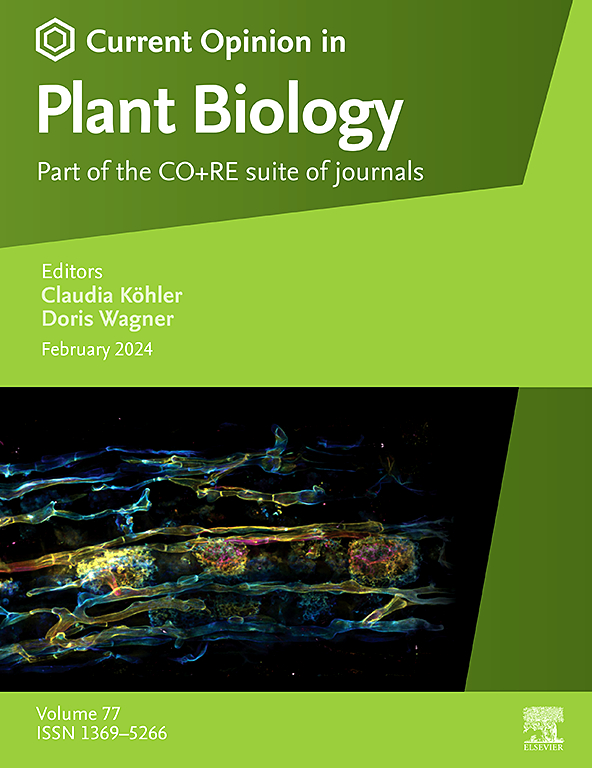感觉和敏感性-解码钙信号通过细胞,自分泌,旁分泌和内分泌途径在植物恢复力
IF 7.5
2区 生物学
Q1 PLANT SCIENCES
引用次数: 0
摘要
钙(Ca2+)信号在植物免疫中起着核心作用,最近的研究结果表明,许多抗病机制导致Ca2+可渗透孔的形成,并且Ca2+内流的光遗传激活足以触发免疫反应。这篇综述强调Ca2+解码,即不同的细胞内蛋白如何解释Ca2+信号来驱动细胞反应。“Ca2+反应性”状态-由不同解码器的不同敏感性和额外的致敏机制定义-有助于免疫调节,可能包括模式和效应触发的免疫途径的相互增强。此外,免疫信号的“引物-旁观者”模型在这个解码框架内被解释。在这里,被感染的细胞被提议通过来自抵抗体孔隙的强Ca2+信号进入引物(PRIMER)免疫状态,而邻近的旁观者细胞对来自其邻居的扩散信号分子作出反应。通过这种空间安排,实现了细胞自主(自分泌)反应和非自主(旁分泌或内分泌)信号之间的协调,从而实现了植物组织间强大的免疫传播。通过这种Ca2+“感觉和敏感性”范式构建植物免疫,提供了对免疫系统鲁棒性的见解,并可能为未来抗病,气候适应型作物的开发确定潜在目标。本文章由计算机程序翻译,如有差异,请以英文原文为准。
Sense and sensitivity - decoding calcium signalling across cellular, autocrine, paracrine and endocrine pathways in plant resilience
Calcium (Ca2+) signalling plays a central role in plant immunity, as underscored by recent findings showing that many disease resistance mechanisms result in formation of Ca2+-permeable pores, and that optogenetic activation of Ca2+ influx is sufficient to trigger immune responses. This review emphasizes on Ca2+ decoding, i.e. how diverse intracellular proteins interpret Ca2+ signals to drive cellular reactions. States of “Ca2+ responsiveness” — defined by the distinct sensitivities of various decoders and additional sensitization mechanisms — contribute to the regulation of immunity, possibly including the mutual potentiation of pattern- and effector-triggered immunity pathways. Additionally, the “PRIMER-bystander” model of immune signalling is interpreted within this decoding framework. Here, infected cells are proposed to enter a primed (PRIMER) immune state through strong Ca2+ signals derived from resistosome pores, while adjacent bystander cells respond to spreading signalling molecules from their neighbours. Through this spatial arrangement, coordination is achieved between cell-autonomous (autocrine) responses and non-autonomous (paracrine or endocrine) signalling, allowing robust immune propagation across plant tissues. By framing plant immunity through this Ca2+ “sense and sensitivity” paradigm, insights are provided into immune system robustness, and potential targets may be identified for future development of disease-resistant, climate-resilient crops.
求助全文
通过发布文献求助,成功后即可免费获取论文全文。
去求助
来源期刊

Current opinion in plant biology
生物-植物科学
CiteScore
16.30
自引率
3.20%
发文量
131
审稿时长
6-12 weeks
期刊介绍:
Current Opinion in Plant Biology builds on Elsevier's reputation for excellence in scientific publishing and long-standing commitment to communicating high quality reproducible research. It is part of the Current Opinion and Research (CO+RE) suite of journals. All CO+RE journals leverage the Current Opinion legacy - of editorial excellence, high-impact, and global reach - to ensure they are a widely read resource that is integral to scientists' workflow.
 求助内容:
求助内容: 应助结果提醒方式:
应助结果提醒方式:


